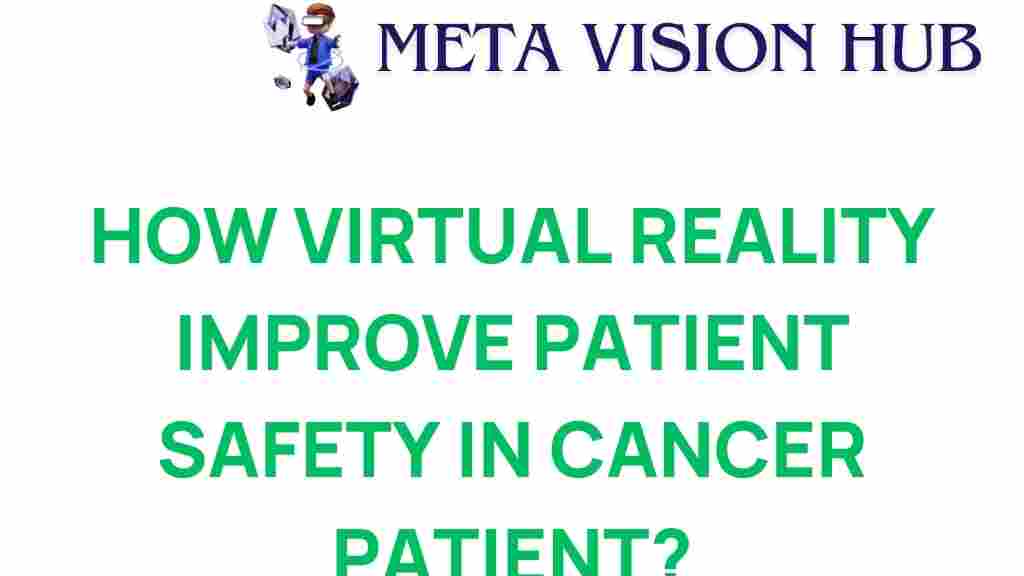How Virtual Reality is Revolutionizing Patient Safety in Cancer Care
The advent of technology has brought about significant changes in various sectors, and healthcare is no exception. Among the most exciting innovations is the integration of virtual reality (VR) in cancer care, which is transforming how patient safety is approached. This article explores how immersive technology is enhancing patient experience, improving medical training, and revolutionizing cancer treatment through innovative solutions that prioritize patient safety.
The Role of Virtual Reality in Cancer Treatment
Virtual reality is a powerful tool that creates simulated environments, allowing users to immerse themselves in a 3D world. In the context of cancer care, VR can play several critical roles:
- Patient Education: VR can help patients understand their diagnosis and treatment options through interactive simulations.
- Symptom Management: Patients can use VR for relaxation and pain management, which can significantly improve their overall experience.
- Enhanced Communication: VR tools can facilitate better conversations between healthcare providers and patients, aiding in informed decision-making.
Improving Patient Safety through Medical Training
One of the most significant applications of virtual reality in healthcare innovation is in medical training. Here’s how VR is enhancing the training of medical professionals, ultimately benefiting patient safety:
- Realistic Simulations: Medical trainees can practice procedures in a risk-free environment. This immersive technology allows them to perform complex surgeries and interventions without the risk of harming actual patients.
- Repeated Practice: VR enables repetitive practice, which is crucial for mastering skills. Repetition in a virtual setting helps build confidence and competence.
- Immediate Feedback: Trainees can receive instant feedback on their performance, allowing them to learn from mistakes and improve their techniques.
Enhancing the Patient Experience
In cancer care, the patient experience is paramount. VR can significantly enhance this experience in several ways:
- Reducing Anxiety: Patients undergoing treatment often experience anxiety. VR can transport them to calming environments, helping to alleviate stress during treatments like chemotherapy.
- Distraction During Procedures: For patients undergoing painful procedures, VR can serve as a distraction, reducing the perception of pain and discomfort.
- Personalized Experiences: VR can offer tailored experiences for each patient, from guided tours of the treatment process to relaxation exercises that suit their preferences.
Virtual Reality and Telemedicine
The integration of VR with telemedicine is another exciting aspect of healthcare innovation. As remote consultations become more common, VR provides a platform for more immersive and interactive patient-provider interactions. Here are some ways VR enhances telemedicine:
- Virtual Consultations: Patients can meet their healthcare providers in a virtual environment, making remote consultations feel more personal and engaging.
- Visual Aids: Providers can use VR to visually explain complex medical concepts, making it easier for patients to understand their treatment plans.
- Follow-Up Care: VR can be used for follow-up sessions, allowing healthcare providers to monitor patient progress in a more interactive manner.
Step-by-Step Process: Implementing Virtual Reality in Cancer Care
Implementing virtual reality in cancer care involves a systematic approach to ensure that it effectively enhances patient safety and the overall treatment experience. Here’s a step-by-step process:
- Assessment of Needs: Identify the specific needs of patients and healthcare providers in the context of cancer care.
- Selecting VR Technology: Choose appropriate VR tools and platforms that align with the identified needs.
- Training Healthcare Providers: Provide comprehensive training for medical professionals on using VR in patient interactions and medical procedures.
- Integration into Patient Care: Incorporate VR into treatment plans and patient education initiatives.
- Feedback and Improvement: Continuously gather feedback from patients and providers to refine and enhance the VR experience.
Troubleshooting Tips for Virtual Reality in Healthcare
While the benefits of VR in cancer care are significant, some challenges may arise during implementation. Here are troubleshooting tips to consider:
- Technical Issues: Ensure that all equipment is regularly maintained and updated to prevent technical failures during use.
- User Comfort: Consider the comfort of patients using VR headsets. Provide adjustments and breaks as needed to enhance the experience.
- Training Gaps: Address any gaps in training by offering ongoing support and resources for healthcare providers.
- Patient Resistance: Some patients may be hesitant to use VR. Provide thorough explanations of its benefits to encourage participation.
The Future of Virtual Reality in Cancer Care
The future of virtual reality in cancer care looks promising, with ongoing research and development aimed at enhancing its applications. As healthcare continues to evolve, the focus on patient safety will remain paramount. Here are some future trends to watch:
- Advanced Simulation Training: Expect more sophisticated VR simulations that mimic real-life scenarios, providing even more realistic training for medical professionals.
- Broader Accessibility: As technology becomes more affordable, expect VR to become accessible in more healthcare settings, including rural areas.
- Integration with AI: Combining VR with artificial intelligence may lead to personalized treatment plans that adapt to individual patient needs in real-time.
Conclusion
In conclusion, virtual reality is revolutionizing patient safety in cancer care, offering innovative solutions that enhance the overall patient experience. From improving medical training to facilitating engaging telemedicine consultations, VR is a prime example of how healthcare innovation can lead to better outcomes for patients. As immersive technology continues to advance, its potential to transform cancer treatment and patient care is limitless. For more detailed insights into telemedicine innovations, visit this resource.
Embracing virtual reality in cancer care not only promotes patient safety but also paves the way for a future where technology and healthcare work hand in hand to improve lives.
This article is in the category Innovations and created by MetaVisionHub Team
